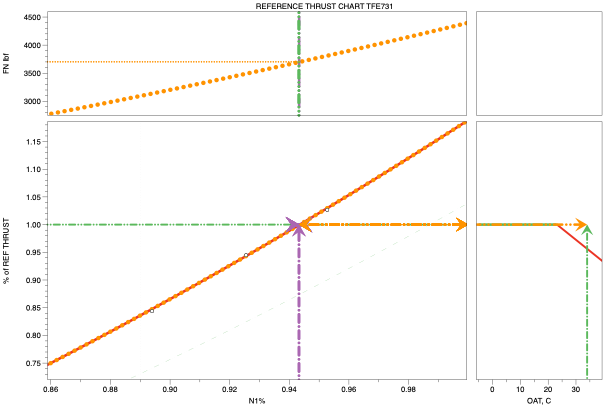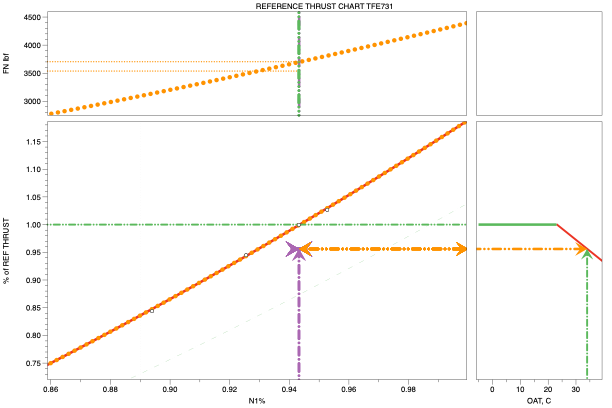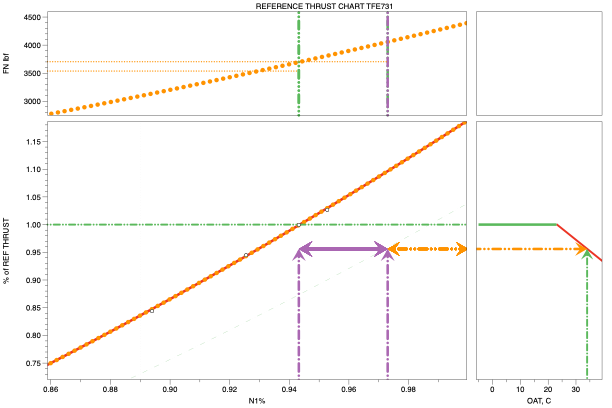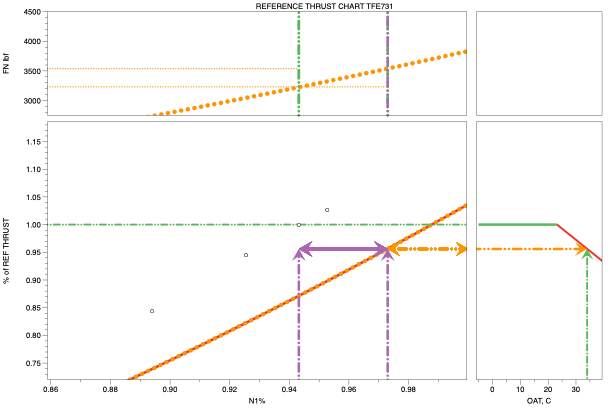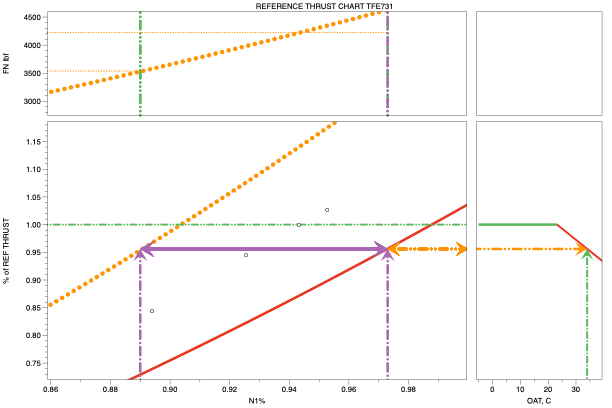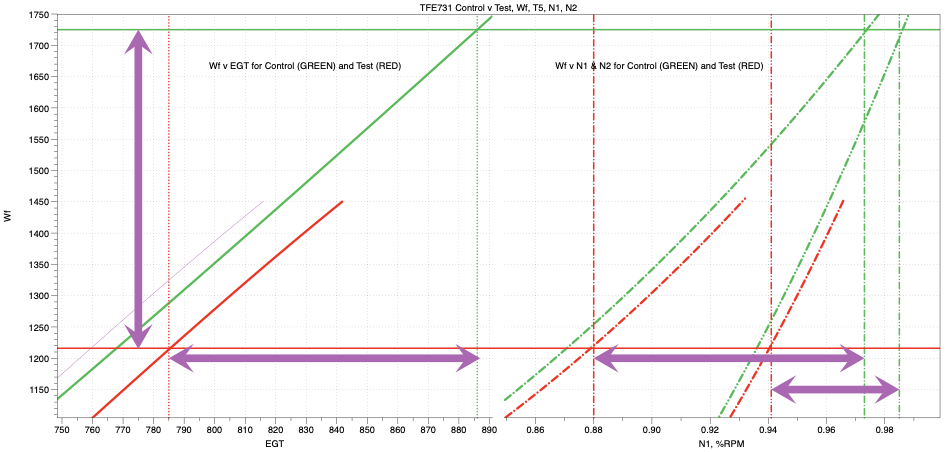Boeing at X-Roads?
Regarding Bombardier and its asset sales including the C-Series (per tdracer), this SLF/atty called Montreal home during those events. The sense of loss among the aerospace commentators and cognescenti in the city and QC generally was nearly tangible. I can only guess wildly at how traumatic reaction to a similar sort of failure would be if a company in the U.S. tried to enter this market, but failed.
Before betting on any of the other aerospace manufacturers succeeding if they tried this market on the premise that BCA will fail (or as some here contend "has already failed"), would it not be the case that sufficiently wise Strategy decisions would be needed for substantial capital investment to materialize? Perhaps the insistent push toward net-zero would open avenues for successful new strategies, but isn't there still much skepticism in the engineering communities of relevance about the feasibility of the long-term aspirational goal set by the ICAO Assembly - especially regarding SAF at realistic quantities and the other new propulsion systems bandied about as if their technology will be available in just a few years? Boeing's difficulties have increasingly become traumatic but they've been starkly visible for all to see for . . . pick your example of decline of engineering excellence and fill in the blank. If a new Strategy was readily available, there has been plenty of time for it to have been recognized and shopped for investment.
Second, People. There are workforce components in various locales with the necessary skills, recency or currency with assembly techniques and all the other disciplines of relevance, just waiting to be hired by some new entrant? Maybe there are but the generalized slide of the American workforce - accelerated by the beancounters' devotion to ROI and share price - makes this poster skeptical.
Third, issues of Process (getting corporate leadership and Boards to understand the strategy and then commiting to the initiative) would be, if not herculean, still very heavy lifting. Fourth, what about Resources? - do any of the supposed willing potential new entrants have capital and debt structures sufficient to fund this sort of massive new aircraft (and/or powerplant) initiative? I mean, and not to pick on that bird, but don't Messrs. Pratt and Whitney have some other place where they're devoting lots of attention (the engine inspections etc.)?
Finally in my set of five objections to seeing a new entrant as of course, obviously realistic and feasible, is Integrity. What got BCA into its sorry state? Do you recall the unspeakably shallow, hollow look worn by the then-CEO as he testified on Capitol Hill in the aftermath of the MAX accidents? Well, is it clear beyond doubt or question that any of the other companies are not in the throes of the beancounters too?
I'm not advocating against any enterprise and I'd be happy to see information showing my doubts and negative assertions proved incorrect.
(Credit for the rubric, Strategy, People, Process, Resources, and Integrity to a true gentleman who shall remain nameless here, except to say his career featured being PASC at least three times. (Presidentially-appointed, Senate-confirmed)
Before betting on any of the other aerospace manufacturers succeeding if they tried this market on the premise that BCA will fail (or as some here contend "has already failed"), would it not be the case that sufficiently wise Strategy decisions would be needed for substantial capital investment to materialize? Perhaps the insistent push toward net-zero would open avenues for successful new strategies, but isn't there still much skepticism in the engineering communities of relevance about the feasibility of the long-term aspirational goal set by the ICAO Assembly - especially regarding SAF at realistic quantities and the other new propulsion systems bandied about as if their technology will be available in just a few years? Boeing's difficulties have increasingly become traumatic but they've been starkly visible for all to see for . . . pick your example of decline of engineering excellence and fill in the blank. If a new Strategy was readily available, there has been plenty of time for it to have been recognized and shopped for investment.
Second, People. There are workforce components in various locales with the necessary skills, recency or currency with assembly techniques and all the other disciplines of relevance, just waiting to be hired by some new entrant? Maybe there are but the generalized slide of the American workforce - accelerated by the beancounters' devotion to ROI and share price - makes this poster skeptical.
Third, issues of Process (getting corporate leadership and Boards to understand the strategy and then commiting to the initiative) would be, if not herculean, still very heavy lifting. Fourth, what about Resources? - do any of the supposed willing potential new entrants have capital and debt structures sufficient to fund this sort of massive new aircraft (and/or powerplant) initiative? I mean, and not to pick on that bird, but don't Messrs. Pratt and Whitney have some other place where they're devoting lots of attention (the engine inspections etc.)?
Finally in my set of five objections to seeing a new entrant as of course, obviously realistic and feasible, is Integrity. What got BCA into its sorry state? Do you recall the unspeakably shallow, hollow look worn by the then-CEO as he testified on Capitol Hill in the aftermath of the MAX accidents? Well, is it clear beyond doubt or question that any of the other companies are not in the throes of the beancounters too?
I'm not advocating against any enterprise and I'd be happy to see information showing my doubts and negative assertions proved incorrect.
(Credit for the rubric, Strategy, People, Process, Resources, and Integrity to a true gentleman who shall remain nameless here, except to say his career featured being PASC at least three times. (Presidentially-appointed, Senate-confirmed)
Maybe not because because the volume market needs to be there, but with a Boeing Commercial/Chapter11/Financial haircut type company maybe the next 100-200 seat could be something different. Something radical needs to happen at Boeing for certain.
The problem is that there is so much uncertainty in the future at the moment. Technology is advancing rapidly, the old Empires are declining (US/EU) and the rest of the world is standing on its own feet and will probably vote with their money and a new competitor will arise in China. We face this uncertainty like many did in the 1960s - technology, British and European Empires declining and a shift in economics. Alvin Toffler described this as "Future Shock" - the uncertainty of the future - yet we all survived. Maybe some of the CEOs should read the book.
Even a non-engineer idiot like me has heard of triple redundancy so why did Boeing not install 3 AoA detectors and the computer discard the info from the odd-one out? Can they really have been that penny pinching? Why not leave some other safety critical stuff out as well? It says the senior management didn't care.
Join Date: Oct 2007
Location: oxford
Age: 45
Posts: 3
Likes: 0
Received 0 Likes
on
0 Posts
“Red the view may be, but the trim switch under the left thumb of the guy in the left seat always functioned. I suppose the switch in the right seat is also under the left thumb. The first crew and second captain managed with zero difficulty; some roller-coaster, but not deadly.
On top of that every flight had far more than seconds (1-5) to deal with the trim loads. I saw red when "The pilots followed the emergency AD exactly" was not in the FDR, at all.”
Unbelievable ignorance from an armchair expert. You have no idea how the startle factor in such a precarious situation affects the individual. But sure, defend the indefensible from your static desk.
On top of that every flight had far more than seconds (1-5) to deal with the trim loads. I saw red when "The pilots followed the emergency AD exactly" was not in the FDR, at all.”
Unbelievable ignorance from an armchair expert. You have no idea how the startle factor in such a precarious situation affects the individual. But sure, defend the indefensible from your static desk.
Yes they were. They had decided to make money instead of aircraft. They kept adding onto a very very old design, thinking they would get away with it. They didn't - and they have blood on their hands because of their extremely poor decisions.
“Red the view may be, but the trim switch under the left thumb of the guy in the left seat always functioned. I suppose the switch in the right seat is also under the left thumb. The first crew and second captain managed with zero difficulty; some roller-coaster, but not deadly.
Even a non-engineer idiot like me has heard of triple redundancy so why did Boeing not install 3 AoA detectors and the computer discard the info from the odd-one out? Can they really have been that penny pinching? Why not leave some other safety critical stuff out as well? It says the senior management didn't care.
In addition, the US Congress has required Boeing to implement additional MCAS safety systems, including a third "synthetic" AoA sensor. The timeline of that is currently looking pretty far out in the US (maybe 2029? due to the delay in the MAX 10) but I believe Europe has a similar requirement and may follow its own timeline.
Does anyone think Embraer are in a position to launch a larger passenger aircraft to compete with the 737? The C-390 is similarly sized to the smaller 737 varients and is a considerably newer and more advanced design. I am not saying the C-390 airframe is suitable for this purpose, just that Embraer obviously have the skills and capability to produce a modern aircraft of this size. With Boeing being very much on the back foot, timing could be very favourable to them.
Does anyone think Embraer are in a position to launch a larger passenger aircraft to compete with the 737? The C-390 is similarly sized to the smaller 737 varients and is a considerably newer and more advanced design. I am not saying the C-390 airframe is suitable for this purpose, just that Embraer obviously have the skills and capability to produce a modern aircraft of this size. With Boeing being very much on the back foot, timing could be very favourable to them.
If so - then it is worth reading the latest entries in the (mis-named) EVTOL thread. Specifically they are regarding a Delft/etc conceptual design for a 76 tonne (76,000 kg) x 90-seat propellor driven BEV aircraft with a 1,000 km (LHR-ATH) range and a 2030s launch date possibility that would take about 1/3 of the potential marke (19% - 52% depending on how you count, see Fig 10 in the Delft study).
EVTOL news and progress - do we need a new dedicated section?
https://pure.tudelft.nl/ws/portalfil..._90_seater.pdf
There are also related discussion going on regarding the commercial viability and the volume scalability of the drop-in liquids eSAF and bioSAF on the one hand; the growth of high speed rail networks on the other hand; the unlikelihood of a hydrogen future; and the rapid growth in all things virtual and bandwidth/latency-related including whatever is called telepresence, virtual worlds, or whatever on any given day of the week.
So .... against this background, how would any potential new entrant manage the market entry risk associated with a fossil-fuel-powered narrowbody jet when there is one perfectly decent one available (A320-series) and two that are in various forms passable (737 and 919) if one is prepared to accept other 'issues'. Assuming one was technically successful in negotiating the project risks in bringing a cleansheet A320-series competitor to market in (say) the early 2030s, then how would one lock-in commercial success early enough so as to guarantee a good economic result by (say) mid-2030s when all the other pressures might completely restructure the market in favour of entirely different solutions.
These are the issues that any serious board looking at such a concept will likely be grappling with. Taking on the high risks of being just a 'me-too' new entrant as a A320-peer are one thing. Doing so just at the same time as high-bypass turbofans get supplanted by entirely different thrust devices with entirely different energy sources; or when the demand for travel goes through some major qualitative and quantitative shift entirely; is an entirely different class of risk.
I accept that for some types of competitor (i.e. nation-states) these may be acceptable risks for reasons of access to other value streams. But for mere commercial entities I suggest this is not a good reason to step forwards unless one is holding a gold-plated cost-plus contract.
Tell me, at what energy density does a 2,000-km range become attractive. If you can tell me that, I can tell you how many years wide your window of opportunity is to launch a commercially-funded conventional fossil-driven high-bypass ratio turbofan medium-range single-aisle*. Then you can judge whether you feel lucky.
(* my guess is a 5-10 year window, no more, until 1,000-1,200 Wh/kg cell densities are available, i.e. mid-to-late 2030s, almost certainly by 2040)
In the 1950-2020 period lots of stuff happened in jet airliners and the associated travel industry, but the main technologies increasingly focussed onto high-bypass. Now is a moment when that design paradigm may no longer hold true. It takes a brave business to launch a new 'conventional' product into such a market.
SAF and very high bypass turbofans will be the future, not battery aircraft. New engines and aircraft designs optimised for this will make a difference in about ten years. Now is the wrong moment to launch new competitors against established families. The engines are needed first.
It would be silly to wait 10 years for an engine to begin a 10 year airframe design process.
SAF and very high bypass turbofans will be the future, not battery aircraft. New engines and aircraft designs optimised for this will make a difference in about ten years. Now is the wrong moment to launch new competitors against established families. The engines are needed first.
The engine is just not ready. You can draft concepts already if you like.
Let us assume for a moment that Boeing have truly dropped the ball re the 737 refreshes, and the 737 replacement product, vs the A320 family refreshes from Airbus. Let us assume that one is either a very senior person at Boeing (or their bondholders) or in the potential sources of competing product (Embraer, Comac, GD, Silly Valley .... Austin, etc) or their major stakeholders in Beijing, Sao Paulo, etc, and of course the engine companies and their associated nation-state golden share holders (or equivalents).
If so - then it is worth reading the latest entries in the (mis-named) EVTOL thread. Specifically they are regarding a Delft/etc conceptual design for a 76 tonne (76,000 kg) x 90-seat propellor driven BEV aircraft with a 1,000 km (LHR-ATH) range and a 2030s launch date possibility that would take about 1/3 of the potential marke (19% - 52% depending on how you count, see Fig 10 in the Delft study).
EVTOL news and progress - do we need a new dedicated section?
https://pure.tudelft.nl/ws/portalfil..._90_seater.pdf
There are also related discussion going on regarding the commercial viability and the volume scalability of the drop-in liquids eSAF and bioSAF on the one hand; the growth of high speed rail networks on the other hand; the unlikelihood of a hydrogen future; and the rapid growth in all things virtual and bandwidth/latency-related including whatever is called telepresence, virtual worlds, or whatever on any given day of the week.
So .... against this background, how would any potential new entrant manage the market entry risk associated with a fossil-fuel-powered narrowbody jet when there is one perfectly decent one available (A320-series) and two that are in various forms passable (737 and 919) if one is prepared to accept other 'issues'. Assuming one was technically successful in negotiating the project risks in bringing a cleansheet A320-series competitor to market in (say) the early 2030s, then how would one lock-in commercial success early enough so as to guarantee a good economic result by (say) mid-2030s when all the other pressures might completely restructure the market in favour of entirely different solutions.
These are the issues that any serious board looking at such a concept will likely be grappling with. Taking on the high risks of being just a 'me-too' new entrant as a A320-peer are one thing. Doing so just at the same time as high-bypass turbofans get supplanted by entirely different thrust devices with entirely different energy sources; or when the demand for travel goes through some major qualitative and quantitative shift entirely; is an entirely different class of risk.
I accept that for some types of competitor (i.e. nation-states) these may be acceptable risks for reasons of access to other value streams. But for mere commercial entities I suggest this is not a good reason to step forwards unless one is holding a gold-plated cost-plus contract.
Tell me, at what energy density does a 2,000-km range become attractive. If you can tell me that, I can tell you how many years wide your window of opportunity is to launch a commercially-funded conventional fossil-driven high-bypass ratio turbofan medium-range single-aisle*. Then you can judge whether you feel lucky.
(* my guess is a 5-10 year window, no more, until 1,000-1,200 Wh/kg cell densities are available, i.e. mid-to-late 2030s, almost certainly by 2040)
In the 1950-2020 period lots of stuff happened in jet airliners and the associated travel industry, but the main technologies increasingly focussed onto high-bypass. Now is a moment when that design paradigm may no longer hold true. It takes a brave business to launch a new 'conventional' product into such a market.
If so - then it is worth reading the latest entries in the (mis-named) EVTOL thread. Specifically they are regarding a Delft/etc conceptual design for a 76 tonne (76,000 kg) x 90-seat propellor driven BEV aircraft with a 1,000 km (LHR-ATH) range and a 2030s launch date possibility that would take about 1/3 of the potential marke (19% - 52% depending on how you count, see Fig 10 in the Delft study).
EVTOL news and progress - do we need a new dedicated section?
https://pure.tudelft.nl/ws/portalfil..._90_seater.pdf
There are also related discussion going on regarding the commercial viability and the volume scalability of the drop-in liquids eSAF and bioSAF on the one hand; the growth of high speed rail networks on the other hand; the unlikelihood of a hydrogen future; and the rapid growth in all things virtual and bandwidth/latency-related including whatever is called telepresence, virtual worlds, or whatever on any given day of the week.
So .... against this background, how would any potential new entrant manage the market entry risk associated with a fossil-fuel-powered narrowbody jet when there is one perfectly decent one available (A320-series) and two that are in various forms passable (737 and 919) if one is prepared to accept other 'issues'. Assuming one was technically successful in negotiating the project risks in bringing a cleansheet A320-series competitor to market in (say) the early 2030s, then how would one lock-in commercial success early enough so as to guarantee a good economic result by (say) mid-2030s when all the other pressures might completely restructure the market in favour of entirely different solutions.
These are the issues that any serious board looking at such a concept will likely be grappling with. Taking on the high risks of being just a 'me-too' new entrant as a A320-peer are one thing. Doing so just at the same time as high-bypass turbofans get supplanted by entirely different thrust devices with entirely different energy sources; or when the demand for travel goes through some major qualitative and quantitative shift entirely; is an entirely different class of risk.
I accept that for some types of competitor (i.e. nation-states) these may be acceptable risks for reasons of access to other value streams. But for mere commercial entities I suggest this is not a good reason to step forwards unless one is holding a gold-plated cost-plus contract.
Tell me, at what energy density does a 2,000-km range become attractive. If you can tell me that, I can tell you how many years wide your window of opportunity is to launch a commercially-funded conventional fossil-driven high-bypass ratio turbofan medium-range single-aisle*. Then you can judge whether you feel lucky.
(* my guess is a 5-10 year window, no more, until 1,000-1,200 Wh/kg cell densities are available, i.e. mid-to-late 2030s, almost certainly by 2040)
In the 1950-2020 period lots of stuff happened in jet airliners and the associated travel industry, but the main technologies increasingly focussed onto high-bypass. Now is a moment when that design paradigm may no longer hold true. It takes a brave business to launch a new 'conventional' product into such a market.
Petit P; whatever the source of conversion from a fuel to an output to achieve some work, in the end y'all gotta convert that output from the engine to a means to develop a useful force.
Nootin' gave us a heads up with his Rule #3, where push meets shove, and that is how every current means of propulsion works, whether it is a Saturn V, Cessna 150, or arguably even your drive tyres on your bicycle. For aircraft, we have simple matters, f=m.an and that is restated as mdot.V. Whether it is an afterburner, turbojet, turbofan or propeller, force is generated by pushing a mass out the back, at a velocity greater than free stream. That bit ain't going away anytime soon. A core massflow happens to be hot, so the local speed of sound is higher, that helps avoid massflow choking at Mach 1.0. A fan massflow is a lower velocity, but higher mass flow, and it gives a better propulsion efficiency from less V losses in the far field. Unfortunately, the faster you fly, the lower the fan thrust component for the engine, for two simple reasons....
1. The fan is effectively a fancy fixed pitch prop. It is limited in the blade angle that can be set for takeoff, static, as stall has to be avoided, (blades are susceptible to flutter, and there is a lot of uglies that occur around non axisymmetric flow into the engine... Those mid span shrouds... dampers... they are there as they need to be normally. The fan blade actually is subject to torsion-bending that is pretty neat, as it is a splined section, the resultant aero forces cause torsion not just bending, and that happens to torsion to higher blade angles. All good when steady case, and when your blades don't have stress concentration built in as a design "feature".
2. The gross thrust output is great at relatively low speeds, but at cruise speed, all that TAS is working against your fan thrust output. For my turbofan in flight test, static 54% of the thrust is derived from the fan normally at sea level, but at FL400, M080, that is below 25%. (thats standard... my engine does something rather different).
Spoiler
Way back when, Mr Froude n' Co sorted out ways to explain how a propeller works, by the means of an actuator disc, and that is a nice and simple analysis so long as you aren't running into compressibility, which unfortunately almost every prop on the planet does in use. (Keeping the tip velocity subsonic with respect to relative airflow is one thing, but if the blades have any level of resultant force giving a thrust component will be transonic, accelerating flow on the suction face to greater than Mach 1, and generating shocks (gaining entropy, sucks), mussing up the boundary layer, and the "CL's" and the "CD's" and the "Cm's". Your vibration isn't all from the engine, much of it is from the unsteady aero effects on the propeller. Prandtl added blade element theory to the propeller understanding, and yet, it is still just achieving Nootin's 3rd law, just as the the turbojet and the turbofan do.
The higher bypass achieves better propulsive efficiency, to a point. As the area of the intake gets bigger, so does the drag from the nacelle. Somewhere a bit past the GE90, we are about at the end of the diameter game for the engine, and can only improve stuff by gearing or variable blade angles or doing some magic.
For anyone who looks at the spoilers below, this causes some curious outcomes in the equations for turbomachinery.
1. Yes, we have removed a specific fluid mechanics limitation that exists in turbomachinery, and it was done by some neat aerodynamics.
2. Yes, the equations of propulsion efficiency look odd, I can't help that, I can only go by what the plane does, and it suggests that we are already overstating propulsive efficiency a tad. Anyone who likes algebra, we have a group of people working on resolving the surprise of propulsive efficiency.
3. No, we do not alter thermodyamics of the core of the blender at all. We do however alter profoundly the entropy of the fan, and the mass flow and velocity of the bypass flow. Amazingly, the engine core doesn't know that it is being fooled, the only difference is that at low RPM, fuel flow is slightly higher, but within error margins, and at higher RPM, fuel flow is around 1% lower than standard for a given RPM, with EGT following suit.
4. It has been flown to FL450, M080 so far, and seems happy enough to go to STC.
5. Vibration is lower, and loads on the fan blades and disc are lower than standard. That is a necessary outcome of the aerodynamics, and has been observed on propellers, helicopter rotors and turbo fans.
What magic looks like....
Spoiler
Magic at FL400, M076
Spoiler
Join Date: Dec 2020
Location: The world
Posts: 24
Likes: 0
Received 0 Likes
on
0 Posts
"Last chance saloon"
From the Financial Times:
==========
The head of Emirates Airline has warned Boeing was in the “last chance saloon” as he prepared to send his own engineers to oversee the plane maker’s production lines after witnessing a long decline in its manufacturing performance.
Sir Tim Clark told the Financial Times he had seen a “progressive decline” in Boeing’s standards, which he put down to long-running management and governance mis-steps, including prioritising financial performance over engineering excellence.
==========
https://on.ft.com/49mDHM1
==========
The head of Emirates Airline has warned Boeing was in the “last chance saloon” as he prepared to send his own engineers to oversee the plane maker’s production lines after witnessing a long decline in its manufacturing performance.
Sir Tim Clark told the Financial Times he had seen a “progressive decline” in Boeing’s standards, which he put down to long-running management and governance mis-steps, including prioritising financial performance over engineering excellence.
==========
https://on.ft.com/49mDHM1
Join Date: Nov 2014
Location: here
Posts: 20
Likes: 0
Received 0 Likes
on
0 Posts
And so it continues.....:
Misdrilled Holes Found on 50 Boeing 737 Max Aircraft: WSJ (businessinsider.com)
Misdrilled Holes Found on 50 Boeing 737 Max Aircraft: WSJ (businessinsider.com)
More Misdrilled Holes
The hits just keep on coming.
https://www.cnn.com/2024/02/04/busin...ntl/index.html
Meanwhile, Boeing is instructing personnel who build aircraft to finish building them.
https://www.cnn.com/2024/02/04/busin...ntl/index.html
Meanwhile, Boeing is instructing personnel who build aircraft to finish building them.
During a recent day onwhich Boeing halted production of the 737 Max to hold a staff meeting to stress the importance of quality control, “many employees voiced frustration with … how unfinished jobs – either from our suppliers or within our factories – can ripple through the production line,” Deal wrote in the memo.“These employees are absolutely right. We need to perform jobs at their assigned position,” he said. “We have to maintain this discipline within our four walls and we are going to hold our suppliers to the same standard.”
“We recently instructed a major supplier to hold shipments until all jobs have been completed to specification,” he said. “While this delay in shipment will affect our production schedule, it will improve overall quality and stability.”
“We recently instructed a major supplier to hold shipments until all jobs have been completed to specification,” he said. “While this delay in shipment will affect our production schedule, it will improve overall quality and stability.”
Last edited by remi; 5th Feb 2024 at 06:01.
Join Date: Nov 2014
Location: here
Posts: 20
Likes: 0
Received 0 Likes
on
0 Posts
Quite frankly I do not understand how a CEO of any airline can approve the buy of a 737 these days - as a shareholder of that company you are screwed.
So hopefully the market will sort the problems in the long run - short term I will avoid airlines that use this aircraft if at all possible.
So hopefully the market will sort the problems in the long run - short term I will avoid airlines that use this aircraft if at all possible.
Just try to get a A321neo delivery slot.
Join Date: Nov 2014
Location: here
Posts: 20
Likes: 0
Received 0 Likes
on
0 Posts
Not a good reason to buy something that is clearly not designed and produced to the required standards.
A test pilot of my company who was a very picky guy and gave the engineers a hell of a time when he didn't like something always said:
"If we design and build something that just about fullfills the certification requirements, than we sent a worst possible (but still legal) product out the door"
Everybody can decide for himself, if Boeing is doing that at the moment - or if they fail even at that.
A test pilot of my company who was a very picky guy and gave the engineers a hell of a time when he didn't like something always said:
"If we design and build something that just about fullfills the certification requirements, than we sent a worst possible (but still legal) product out the door"
Everybody can decide for himself, if Boeing is doing that at the moment - or if they fail even at that.
You asked.






